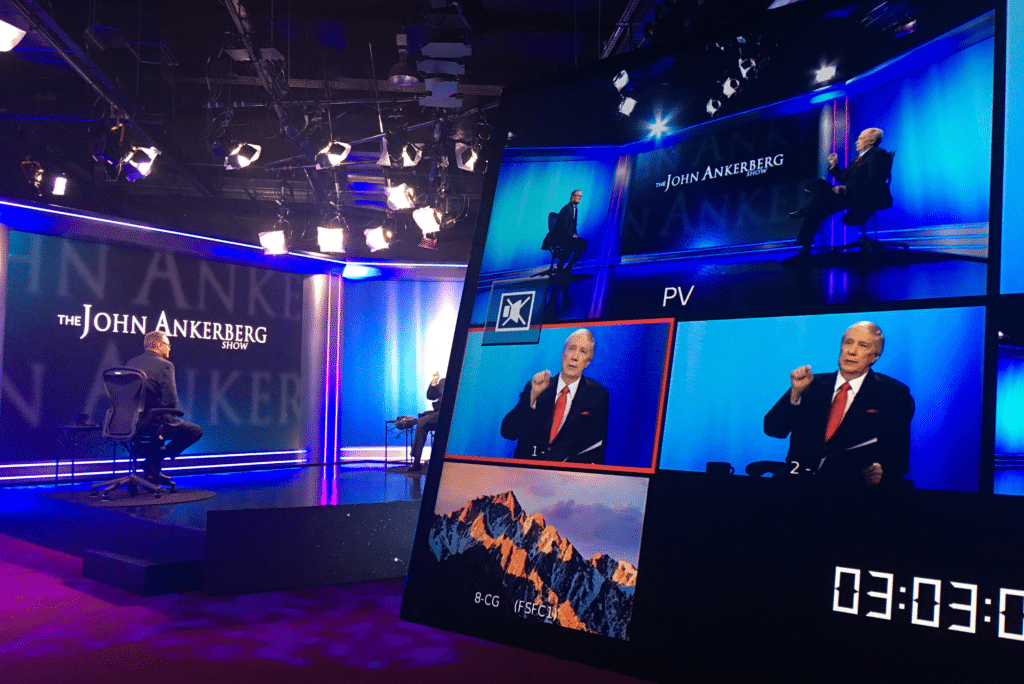Have the Basic Doctrines of the Roman Catholic Church Changed Today?-Part 2
| By: Dr. John Ankerberg, Dr. John Weldon; ©2002 |
| One might be tempted to think Roman Catholic doctrines have changed, given the movement toward unity with other religious groups in recent years. But, as the authors document, such is not the case. There are several key issues that present a real barrier to any doctrinal accord. |
(Continued)
In essence, Protestant evaluation of Catholic doctrine has been made a bit more difficult by the changes of Vatican II. As Protestant theologian Millard J. Erickson observes in his Christian Theology:
- [Examining Catholic theology] is difficult because, whereas at one time there was a uniform, official position within Roman Catholicism on most issues, now there appears to be only great diversity. Official doctrinal standards still remain, but they are now supplemented, and in some cases are seemingly contradicted, by later statements. Among these later statements are the conclusions of the Second Vatican Council and the published opinions of individual Catholic scholars.[1]
Again, no one should doubt that official doctrinal standards do remain, whether or not individual Catholics accept them. To accept the authority of Rome is to accept the official doctrines in spite of any interpretive problems or implications of Vatican II.
However, it is also important to realize that although official Catholic doctrines were upheld, Vatican II also laid the groundwork for the undermining of Catholic doctrine in certain ways. As a result, Roman Catholicism today is evolving more toward subjectivism, mysticism, theological universalism and ecumenicism; more toward concern with people’s authority than papal authority, more concerned with the infallibility of religious experience than the infallibility of Scripture; more concerned with higher critical methods for evaluating biblical content than biblical content itself.
In large measure this may explain the degree of confusion and divergence one finds in Roman Catholicism as a whole. We think that the following comments by Church historian Dr. David Wells bear out our analysis. In a paper titled, “The Long Winter of Wreckage,”[2] Dr. Wells points out that the Evangelical community needs to recognize where Rome is going if it is going to truly be of assistance to Catholics who are increasingly finding themselves floundering in a sea of subjectivism. He argues that evangelicals must seek to develop a new relationship with contemporary Catholicism that takes into account the changes that have occurred.
Thus, “however turbulent the post-conciliar days have been,” in effect they are only “the Indian Summer which has preceded a long winter of wreckage.” “When the storms break and the old moorings finally snap, evangelicals will want to be able to show Christ’s compassion to those who have been abandoned and battered. To do so they must have a new apologetic.”[3]
What changes did Dr. Wells point out that Evangelicals must come to terms with? We quote from his analysis of Vatican II:
- The Catholic Church… has embarked on a process of theological reconstruction…. The emphasis is being shifted away from outward and visible ecclesiastical structure to the inward and invisible spiritual experience of its members…. The old dictum that salvation cannot be secured outside the Church has been repudiated. Sincere religious experience, either inside or outside the Church, is considered to be salvivic [Con. LG, 9]…. Even an atheist may be secretly moved by grace to find salvation. The Council nowhere insisted that this atheist must rescind his atheism in favor of an explicit theism before salvation can take place….
- The Second Vatican Council has deliberately attempted to reverse the last three centuries of its history…. As the emphasis has shifted away from outward Church structure to its inward spiritual reality, the people are rapidly replacing the Pope in importance.[4]
To illustrate, the constitution on the Church from Vatican I contained four chapters “all of which were concerned with the Pope”;[5] however, the corresponding document from Vatican II had eight chapters, but only one dealt with the Pope. Further, there was a strong emphasis placed on “the people’s role in the formation of doctrine. The former doctrine of the Pope’s infallibility has been matched, in the documents of Vatican II, by a corresponding infallibility which has been ascribed to the people. [Con. LG, 25, 49]”[6]
This continuing change in emphasis from the objective to the subjective has also resulted in a new approach toward Scripture, in particular the acceptance of higher criticism:
- The New Catholicism has moved away from the notion of an objective revelation given in Scripture (and tradition) to that of a subjective revelation given in experience [Con. DV, 2, 8]…. The predominance of the subjective over the objective in this conception is strongly reminiscent of Schleiermacher’s theology. Consequently, Catholic biblical scholars are rapidly establishing a new relationship with non-evangelical Protestant scholars. Catholic scholars are freeing themselves from the innumerable commitments which the Church has made on the matter of an inerrant Scripture and are busy immersing themselves in Protestant critical scholarship…. The infallibility of the Bible need not be defined in terms of its propositional form. The notion of infallibility properly belongs to the moment of encounter between man and God’s Spirit in which the Bible is instrumental. The Bible, then, is not infallible but religious experience is.[7]
An example of the Church’s acceptance of higher criticism can be seen in the Vatican document released March 18, 1994, “The Interpretation of the Bible in the Church” which officially accepts higher critical methods—and castigates Protestant reliance on a literal approach to Scripture as “naive” and as “a kind of intellectual suicide.”[8]
In addition, although Scripture and tradition were upheld by Vatican II as “one sacred deposit of the Word of God,” both have become more enmeshed in the subjective: “Both Scripture and tradition are the outward records of the same inward religious experience. There is no generic difference between them; Scripture is merely the first chapter in a long history of tradition.”[9]
In summary, the new emphasis upon the subjective has brought Catholicism more problems than it has solved. First, it “has subjugated the Church, the Pope, the Bible and tradition to the vagaries of a shifting and blurred religious experience.”[10]
Second, with the subjective religious experience of God becoming paramount, it is difficult to deny claimed religious experiences with God among the faiths of other people. If one does not have an objective standard by which to appeal, it is easier to conclude salvation can be found not only within Catholicism but also within non-Christian religions as well.[11] All this, of course, implies “the tenets of universalism which are implicit in the stance of the New Catholicism [and] are profoundly antithetical to biblical theology.”[12]
In a sense, then, within modern post-Vatican II Catholicism, we have Scripture being subjugated to dual enemies: inward religious experience and the vagaries of religious tradition. Where Catholicism chooses to emphasize the inward experience of “Spirit,” “the meaning of Scripture therefore becomes subject to the knowledge derived from religious experience.”[13] On the other hand, where Catholic tradition holds sway, “Catholics subjugate the content of the written Scriptures, not to religious experience, but to tradition.”[14]
Unfortunately, in neither case is Scripture permitted to speak for itself. In fact, Scripture is able to assert its own meaning only insofar as either religious experience or tradition will permit it to do so. In both cases biblical content becomes obscured through the eyes of foreign elements.
- The thrust, then, of the New Catholicism, is in three directions. Firstly, religious experience is being allowed to dissolve the Church structure. Secondly, religious experience is undermining the authenticity of biblical records. Thirdly, religious experience is providing the basis on which the whole human race may be redeemed. This thrust represents a dramatic triumph of the subjective over the objective, of the inward over the outward, and of the experiential over the historical.[15]
What all this means is that, in its apologetic approach, evangelicals do need to be prepared to deal with different forms of Catholicism than the monolithic entity encountered at the time of the Reformation. But whether Catholic tradition or individual religious experience holds sway, the appeal must always be to what Scripture declares is true.
In perhaps a curious manner, the emphasis upon both tradition and religious experience can be seen in Roman Catholic Mariology.
Apart from instituting the doctrine of papal infallibility in 1870, the only other two official dogmas pronounced by the Church have dealt with Mary—her alleged Immaculate Conception (1854) and her alleged bodily ascension or Assumption into heaven (1950).
Given the current Pope’s (John Paul II) alleged visions of Mary and the fact that he apparently believes Mary saved his life during the assassination attempt, one could imagine a greater mixture of tradition and mysticism emerging.
The direction of Modern Roman Catholic theology does seem to lie in the expansion of Mariology. In fact, it would not surprise us if the next papal dogma were to involve the official proclamation of Mary as co-redemptrix and co-mediatrix of all graces. Practically speaking, this is already a “dogma” but papal authorization, especially given the Pope’s personal relationship with Mary, would certainly be a powerful support—not only for Marian tradition—but for the dramatic resurgence of Marian apparitions throughout the world, apparitions which are affecting the lives of millions of people.
In conclusion, have the doctrines of Rome changed? Thirty years after Vatican II, it is clear that, officially, the historic doctrines of Rome that are of most concern to Protestants, which are handed down from its centralized teaching authority, have changed little or not at all. Nor is this surprising. For example, to have instituted major changes in key doctrines relating to the very nature of salvation itself, would be tantamount to admitting error and even heresy—that Rome, which all along has claimed direct counsel, guidance and inspiration from God Himself, was actually teaching falsehoods and leading her own people astray.
But the winds of change are also blowing in the Church and among the laity—only time will chronicle the end result.
In the meantime, it should be recognized that whatever the final consequences ofVatican II, key teachings that Protestants have always questioned have not been abandoned by the Catholic Church.
The nature of salvation is one of these crucial doctrines. So what exactly does the Catholic Church teach about salvation that Protestants disagree with—so strongly, in fact, that such disagreement began the Protestant Reformation in the sixteenth century?
In the coming months we will start to understand the nature of the tensions currently existing between Rome and Evangelicalism. We will begin with a discussion of the Roman Catholic doctrine of justification.
Contents
Notes
- ↑ Millard J. Erickson, Christian Theology (Grand Rapids, MI: Baker, 1986), One Vol. ed., 901.
- ↑ David Wells, “The Long Winter of Wreckage,” Xerox copy of lecture, nd, npp.
- ↑ Ibid., 6.
- ↑ Ibid., 1, 2.
- ↑ Ibid., 2.
- ↑ Ibid., 2.
- ↑ Ibid., 3.
- ↑ Greg Burke, “Vatican Takes Aim at Fundamentalists,” World, April 9, 1994, 13.
- ↑ Ibid., 3-4.
- ↑ Ibid., 4.
- ↑ Ibid., 5.
- ↑ Ibid., 5.
- ↑ Ibid., 4.
- ↑ Ibid., 4.
- ↑ Ibid., 6.







